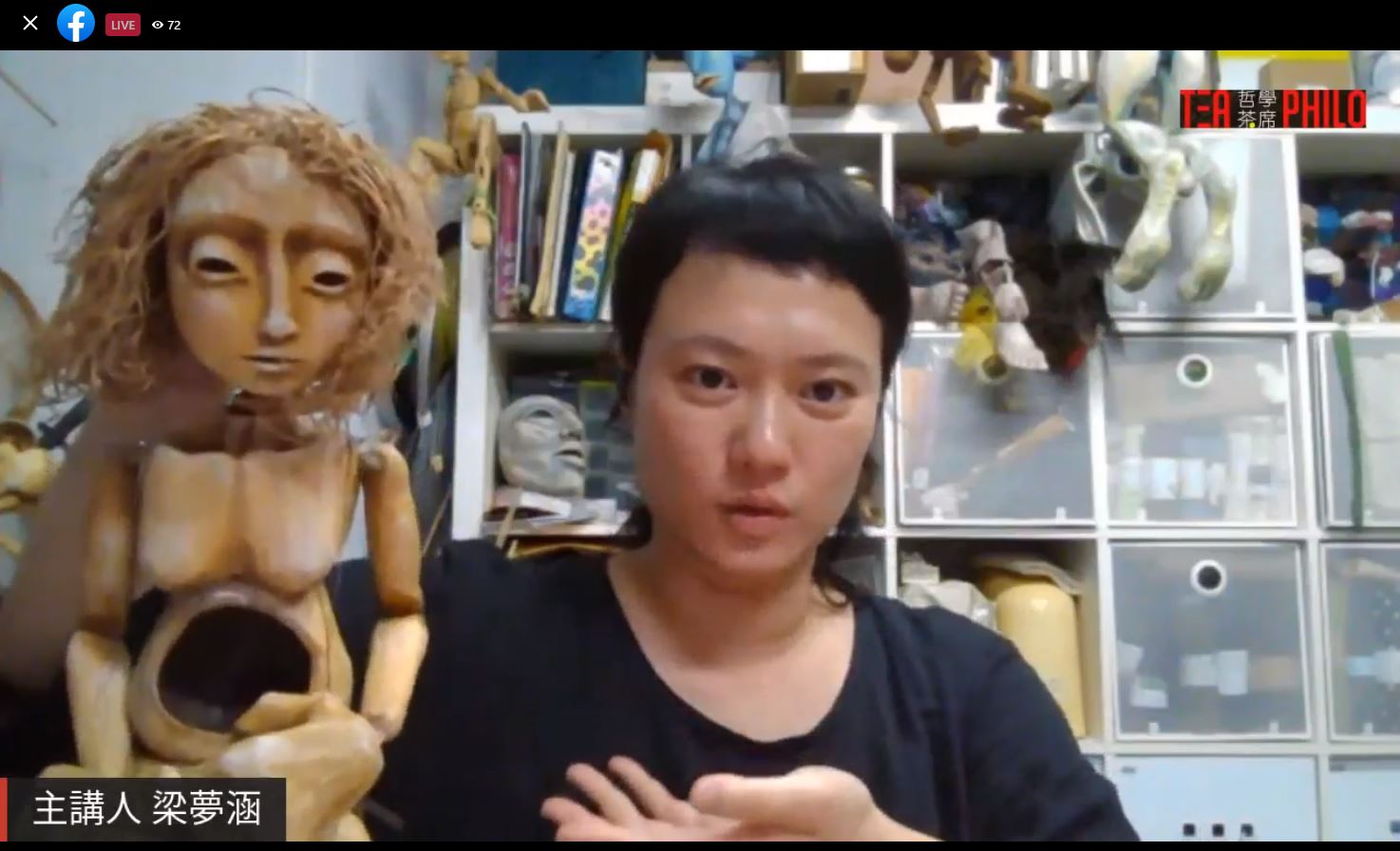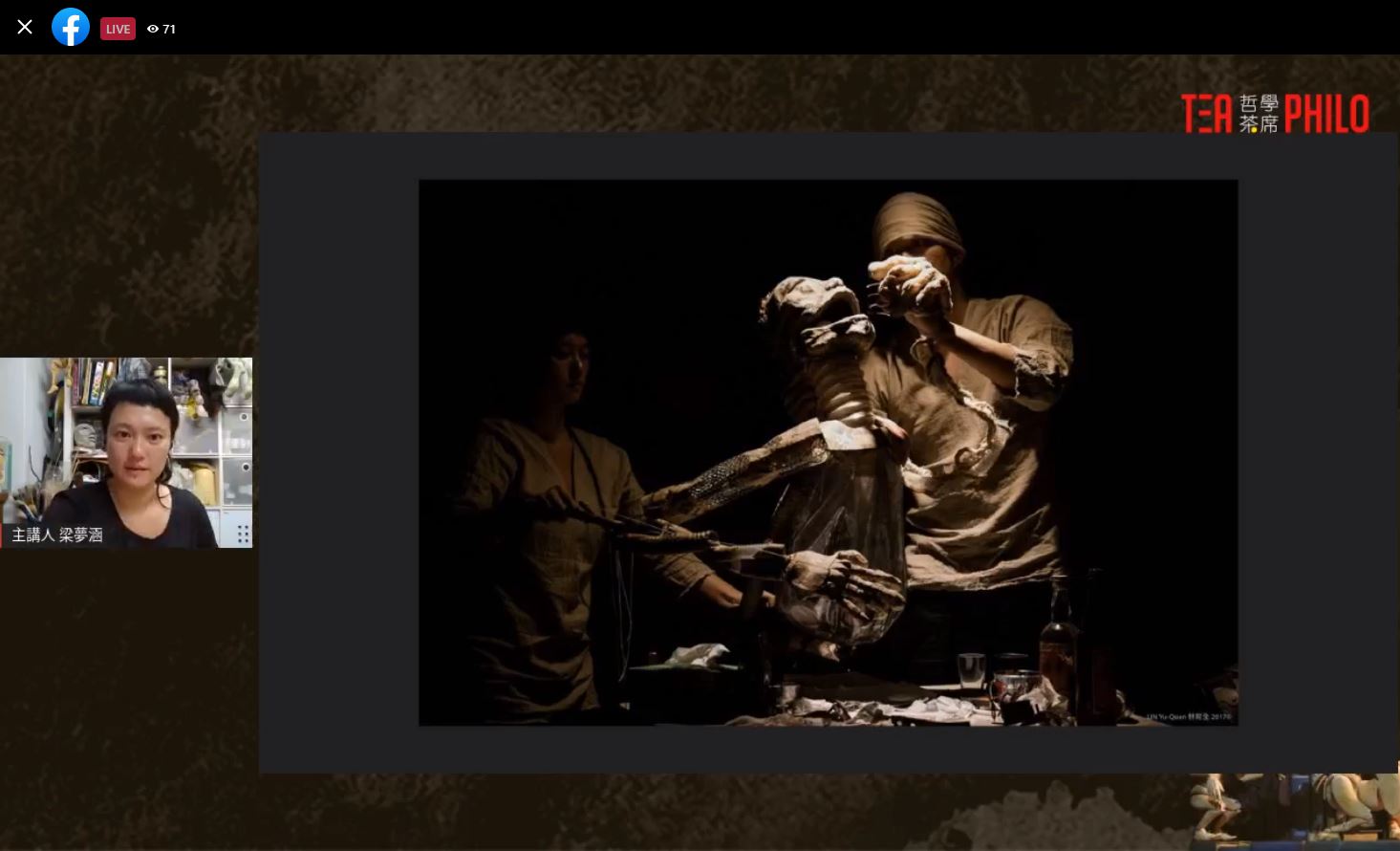Tea Philo 2022
The Aesthetics of Contemporary Puppet Making
【Tea Philo】50
Guest Speaker:
Liang Mong-Han
Speaker Bio:
Liang Mong-Han is a puppetry artist and a puppet and mask designer for theatre performances. She has a wide range of collaborations with Théâtre des Enfants Terribles, Flip Flops Theatre, Shinyshoes, Jin Kwei Lo Puppetry Company, Dark Eyes Performance Lab, U Theatre, One Player Short Ensemble, and Puppet & Its Double. Her works can be seen in 2017 Keelung Story, the Grasstraw Festival, and Lizé International Puppet Festival.
Theme of Discussion:
The Aesthetics of Contemporary Puppet Making
Summary:
Organised by the Taipei Economic & Cultural Office in Malaysia and produced by INXO Arts & Culture (L) Foundation, Tea Philo is a series of sharing sessions revolving around the discussion of philosophies and humanities. Luminaries from Taiwan are invited to share their experiences and engage with the Malaysian audience to encourage cultural exchange.
The latest Tea Philo E-talk titled “The Aesthetics of Contemporary Puppet Making” features Liang Mong-Han, a puppetry artist and puppet and mask designer and maker from Taiwan. The E-Talk was conducted in Mandarin and was broadcast through Tea Philo’s Facebook page from 8pm-10pm on 19th March 2022 (Saturday). Ling Tang, Malaysian theatre director and Ling Goh, a fourth-generation Teochew Opera practitioner were also invited as moderators and discussants at the talk.
As a puppetry artist, Liang Mong-Han has collaborated in a wide range of projects with many puppeteers, artists and performance groups, including the Théâtre des Enfants Terribles, Flip Flops Theatre, Shinyshoes, Jin Kwei Lo Puppetry Company, Dark Eyes Performance Lab, U Theatre, One Player Short Ensemble, and Puppet & Its Double. Recently, she has also been working with fellow puppeteer Chen Chia-Hao to create small-scale contemporary puppetry theatre shows under the name of Puppet Workbench Studio. The duo art group combines traditional puppetry techniques with contemporary experimentations and produces works that emphasises on the experience of exploring and nurturing the relationship between puppets and humans throughout the processes of designing, making and performing. Some works she has participated in include Hiss and Arf, Calluses, Planting a Baby, and Mo and Dog. Her works have been seen in 2017 Keelung Story, the Grasstraw Festival, and Lizé International Puppet Festival.
In the E-Talk session, Liang Mong-Han introduced the common types or forms of puppets used in contemporary puppetry, namely iron-rod puppets, string puppets, tabletop puppets, glove puppets and more. She explained the process of puppet creation, from concept and character design to prototyping, building and sculpting. Liang mentioned that each puppet is unique, and puppet makers need to take into consideration different factors, such as show duration, strength of the puppeteer, rehearsal usage, and stage lighting and environment, to produce puppets that are not only fitting on the appearances, but also have the ability to endure the usage and allow puppeteers to perform well on stage.
Liang clarified that although she has had some experience with traditional puppetry, most of her views and ideas on puppetry and puppet making comes from a contemporary point of view, noting that she is especially interested in tabletop puppetry, where the “stage” is generally just about the height of a table, behind which the puppeteers (performers) stand and perform, with a close or direct contact with the puppets. “I really like to play around with the relationship between the puppeteer, the puppet, and their movements and interactions,” Liang mentioned, “What do the puppeteer and the puppet mean to one another this time? How can we utilise the difference in size, appearance and movement between them to make people wonder about something? Sometimes the meaning of the play or the puppet itself manifests in interaction with the puppeteer.”
Liang further elaborated on her philosophy of what contemporary puppetry is: “In contemporary puppetry plays, puppets can be alive or lifeless; it can switch between the two status or become a medium through which creators and puppeteers express the characters’ mental state or story. This duality in identity opens up a lot of room for imagination and interpretation for the audience.” On the note of creating non-traditional puppets, Liang also talked about her distinctive style which is rather surreal, dark, and abstract, and how it supports the stories and themes she is interested in.
When asked by a listener if there was any part of puppet-making she would always pay extra attention to, Liang showed the audience a few puppets she had made and brought attention to their eyes: “I have this personal and rather specific preference to make puppets with slightly asymmetrical or uneven eyes. This allows the puppets to show more kinds of facial expressions when the puppeteer tilt them at different angles,” Liang explained, “and it is like giving them a much wider range of vocabulary to speak with.” Liang added that she spends a lot of time observing the facial features and expressions of strangers and people around her, as this helps her create puppets capable of richer expressions.
“While puppet makers often work in their studio, puppet making is actually an art that involves all that is happening on stage,” Liang concluded, “A good puppet is born from the puppet maker’s deep understanding of and close cooperation with the director, performers, stage design, and even the audience.”
Upcoming Tea Philo E-Talks will be announced soon on the Tea Philo Facebook Page. All past events available for rewatch can also be found at the Facebook Page or the Youtube channel of INXO Arts & Culture Foundation.
Host:
Ling Tang (Malaysian theatre director), Ling Goh (The fourth-generation Teochew Opera practitioner)
Date:
10th April 2021 (SAT)
Time:
8pm-10pm








